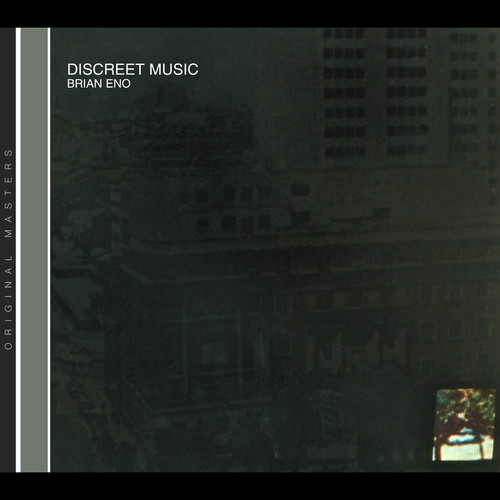
Discreet Music
by Sean WestergaardThe latter part of 1975 was a remarkably creative period for Brian Eno. With his masterpiece Another Green World, Eno began moving away from the structure and sound of pop music toward a more static instrumental model, influenced in part by Erik Satie and strongly informed by his prior collaborations with Robert Fripp. Recorded just a month after Another Green World, Discreet Music is his first full foray into what has become known as ambient music. Using the same system of two reel-to-reel tape recorders as No Pussyfooting and Evening Star, Eno was able to layer simple parts atop one another, resulting in a beautiful piece of music that never really changes but constantly evolves with the addition and decay of different parts. And while there were elements of noise and dissonance on the albums with Fripp, all the sounds here are calming and serene. The second half of the album deals with the same ideas of recurring themes and evolution but uses a different approach. Here, members of the Cockpit Ensemble use pieces of the score of Pachelbel's Canon in D Major, but the relation of these elements changes over time by having the parts slow at differing intervals or using different lengths of the musical score. The same notions of theme and constant variation appear, but without the aid of the tape delay system. The tones of the strings are vastly different from the synth tones of the title track, but the effect on the listener is the same, with the pieces delicately unfolding over time. Discreet Music's reputation as a groundbreaking and influential work is surpassed only by its placid beauty. Highly recommended.
